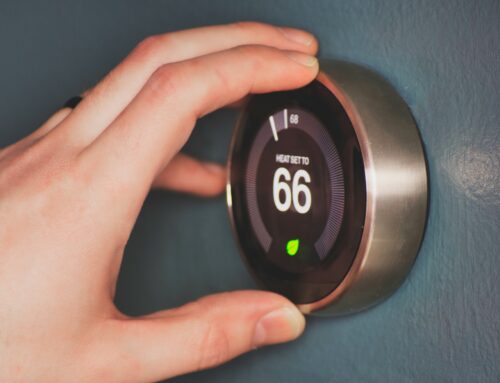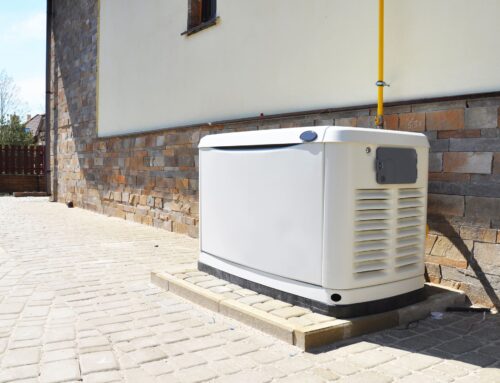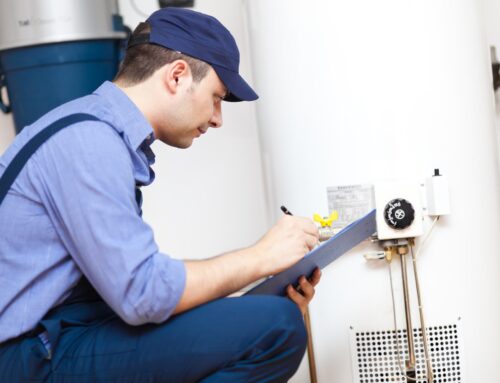Ever wondered what it would be like to control your home’s temperature and energy usage with a simple voice command or tap on your smartphone, using room sensors and hvac equipment? Smart home integration with HVAC systems, room sensors, seamless connectivity, voice control, and temperature adjustments is making this a reality. The synergy between smart home devices, room sensors, and HVAC technology isn’t just about convenience; it’s also about optimizing energy efficiency by eliminating unnecessary heating and allowing for compatibility and temperature adjustments. With remote access, homeowners can effortlessly manage their indoor climate and hvac equipment from anywhere, which offers advantages in terms of hvac efficiency. This blog post delves into the game-changing benefits and advantages of integrating smart technology with HVAC systems, offering insights into how this innovation is reshaping modern living.
Smart Home and HVAC Integration
Smart home integration optimizes HVAC system performance by automatically adjusting settings based on real-time data, compatibility, and advantages. Energy consumption is reduced through intelligent scheduling, adaptive temperature control, and HVAC efficiency. For example, if no one is at home during the day, the smart thermostat can adjust the temperature to save energy and improve HVAC efficiency, and it can then readjust when people start returning in the evening.
The seamless integration of smart devices with HVAC systems enables precise temperature regulation, resulting in improved system efficiency. This means that your HVAC system will only operate when necessary, reducing unnecessary energy usage and lowering utility bills, increasing HVAC efficiency.
-
Automatic adjustment based on real-time data
-
Intelligent scheduling for energy conservation
-
Adaptive temperature control for improved efficiency
Remote Control
Smart home integration allows users to control their HVAC systems remotely using smartphones or voice commands. Whether you’re at work or away on vacation, you can conveniently adjust temperature settings and monitor energy usage for HVAC efficiency from anywhere. If there’s an unexpected change in your plans, you have the flexibility to make adjustments without having to be physically present at home.
This remote access also includes receiving alerts about any unusual patterns or issues with your HVAC system. This level of connectivity provides homeowners with peace of mind knowing they have full control over their indoor climate and HVAC efficiency regardless of their location.
-
Convenient remote control via smartphone or voice commands
-
Flexibility to adjust settings from anywhere
-
Monitoring energy usage and receiving alerts remotely
User Experience
Smart home integration enhances the overall user experience by providing intuitive interfaces and personalized settings for controlling HVAC systems. Users can easily customize temperature preferences, create schedules based on daily routines, and receive energy-saving recommendations tailored specifically to their homes’ HVAC efficiency.
The seamless integration ensures that operation becomes simpler while improving user satisfaction through a more comfortable living environment alongside cost savings from reduced energy consumption and increased HVAC efficiency.
-
Intuitive interfaces for easy customization
-
Personalized settings tailored to individual needs
-
Simplified operation leading to improved user satisfaction
Predictive Maintenance
Smart home integration enables predictive maintenance by continuously monitoring HVAC system performance through real-time data analysis.
Understanding Smart Integration
Functionality
Smart home integration expands the functionality of HVAC systems by integrating them with other smart devices. For example, connecting your thermostat to a voice assistant like Google Home or Amazon Alexa allows you to control the temperature using voice commands and improve HVAC efficiency. This means you can adjust the temperature without having to physically interact with the thermostat. When integrated with wearable devices, such as smartwatches, HVAC systems can automatically adjust based on your location and activity levels. This level of automation and hands-free control creates a more convenient and efficient living experience.
Another benefit is that combined functionalities enable a more connected and streamlined living experience. For instance, integrating your HVAC system with smart window shades can lead to coordinated actions where the shades close when the air conditioning turns on, optimizing energy efficiency while maintaining comfort.
Connectivity
Smart home integration provides seamless connectivity between HVAC systems, smartphones, and other smart devices in your home network. With Wi-Fi or Bluetooth connectivity, homeowners can remotely monitor and control their HVAC systems from anywhere using their smartphones or tablets. This means being able to adjust temperatures before arriving home or turning off heating/cooling when leaving for extended periods.
Moreover, these connected ecosystems enable synchronized operation among various smart devices within the home. For instance, an integrated system could automatically lower the temperature setting on your thermostat when it detects that no one is at home based on signals from motion sensors or GPS data from family members’ smartphones.
Energy Monitoring
Smart home integration enables real-time energy monitoring of HVAC systems which promotes energy-conscious behavior among homeowners by providing detailed insights into energy usage patterns. By leveraging this feature they are empowered to make informed decisions about efficient energy management strategies leading towards potential cost savings.
Smart Thermostats and HVAC
Smart home integration with HVAC systems offers numerous benefits. Enhanced control, automation, and personalized settings contribute to a more comfortable living environment. For example, smart thermostats allow users to set different temperatures for various times of the day, ensuring optimal comfort throughout.
Moreover, smart devices utilize room sensors and occupancy detection to adjust temperature settings based on the presence of people in specific areas. This not only enhances comfort but also contributes to significant energy savings by avoiding unnecessary heating or cooling when no one is present.
Energy-efficient operation is another key benefit of smart home integration with HVAC systems. By optimizing the HVAC system’s operation through intelligent scheduling and adaptive temperature control, users can maximize energy savings over time. For instance, these devices can learn user preferences and adjust settings accordingly without manual intervention.
Energy Savings
The use of traditional thermostats often leads to unnecessary energy consumption due to constant manual adjustments or forgetting to turn off the system when leaving the house. In contrast, smart home integration optimizes HVAC system operation by leveraging advanced features such as intelligent scheduling and occupancy detection.
These energy-saving features significantly reduce utility bills over time while minimizing environmental impact through reduced energy consumption. Ultimately, this results in substantial cost savings for homeowners while promoting sustainability through efficient resource utilization.
Cost Effectiveness
In addition to reducing energy consumption and associated costs, smart home integration with HVAC systems provides long-term cost-effectiveness through predictive maintenance capabilities that help minimize repair expenses while extending equipment lifespan. The initial investment in smart devices is offset by these long-term financial benefits as well as decreased maintenance costs compared to traditional thermostats.
Home Automation and HVAC Systems
The future of smart home integration with HVAC systems holds exciting possibilities for further advancements. Integration with machine learning algorithms will enable even more precise temperature control and energy optimization. For example, these algorithms can analyze historical data to optimize HVAC system performance based on user preferences and external factors. This continuous learning allows the system to adapt to changing conditions and provide personalized comfort settings.
Continued development of AI technology will enhance automation capabilities and improve user experience. As a result, machine learning integration enhances energy efficiency and reduces manual adjustments, making it easier for homeowners to maintain comfortable indoor temperatures while minimizing energy consumption.
Comfort and Convenience Benefits
Enhanced Comfort
Smart home integration with HVAC systems offers enhanced comfort through precise temperature control and personalized settings. Users can create custom schedules, set different temperatures for individual rooms, or activate pre-defined comfort modes. For example, during the winter, you can program your smart thermostat to increase the temperature in the living room while keeping the bedrooms cooler for better sleep. These enhanced comfort features contribute to a more enjoyable living environment.
The ability to customize temperature settings provides a tailored experience that caters to individual preferences. This level of personalization ensures that everyone in the household is comfortable without compromising on energy efficiency.
Zoning Systems
With smart home integration, zoning systems allow independent temperature control in different areas of the house. Each zone can have its own temperature settings, ensuring optimal comfort and energy efficiency. For instance, during summer months, you can set lower temperatures in frequently occupied areas like the living room while maintaining higher temperatures in less-used spaces such as guest rooms or storage areas.
Zoning systems eliminate the need to heat or cool unoccupied areas, resulting in significant energy savings over time. By directing conditioned air only where it’s needed most at any given time, homeowners can enjoy improved comfort while reducing their environmental impact.
Accessibility
Smart home integration enhances accessibility for individuals with mobility limitations or disabilities by providing remote control capabilities and voice commands for HVAC system controls. This accessibility feature not only improves independence but also enhances overall quality of life for all users within a household.
Energy and Cost Optimization
Energy Efficiency
Smart home integration with HVAC systems enhances energy efficiency by utilizing real-time data to optimize the operation of heating, ventilation, and air conditioning. This means that the system adapts its temperature control based on occupancy detection and energy monitoring. As a result, homeowners can experience reduced energy consumption without sacrificing comfort. For instance, when no one is at home, the smart system can automatically adjust the temperature to conserve energy.
Adaptive temperature control not only provides comfort but also significantly contributes to lower utility bills. By leveraging smart technology for HVAC systems, homeowners can reduce their carbon footprint and actively support sustainability efforts in their communities. The ability to monitor and regulate energy usage efficiently makes a substantial impact on both environmental conservation and cost savings.
-
Adaptive temperature control
-
Occupancy detection
-
Energy monitoring
Competitive Edge
In today’s real estate market, properties equipped with smart home integration for HVAC systems hold a competitive edge over traditional homes. Homebuyers are increasingly seeking modern residences that offer sustainable living solutions while providing convenience and cost savings. Smart technology integrated into HVAC systems caters perfectly to these demands.
The added convenience of remotely controlling heating or cooling settings through smartphones or voice commands is an attractive feature for potential buyers looking for modern homes with advanced technological capabilities. Furthermore, the prospect of long-term cost savings due to reduced energy consumption further enhances the appeal of such properties in the competitive real estate market.
-
Modern, energy-efficient homes
-
Remote control capability
-
Long-term cost savings
Environmental Impact
By promoting efficient operation of HVAC systems through smart home integration, homeowners contribute positively towards reducing their environmental impact. Lowering overall energy consumption results in decreased greenhouse gas emissions as well as a smaller carbon footprint associated with household activities.
Through environmentally conscious choices like integrating smart technology into everyday living spaces such as heating and cooling systems, individuals have an opportunity to make meaningful contributions toward environmental preservation within their own households.
Advanced HVAC Analytics
AI Integration
Smart home integration with HVAC systems benefits greatly from the integration of artificial intelligence (AI). By incorporating AI technologies, these systems can analyze data patterns to optimize temperature control and predict user preferences. For instance, AI algorithms can automatically adjust the thermostat based on a person’s daily routine or preferred temperature settings. This not only enhances comfort but also improves energy efficiency by reducing unnecessary heating or cooling when no one is at home.
Moreover, AI integration enables continuous learning and adaptation, leading to more accurate climate control over time. For example, if an individual consistently adjusts the temperature after returning home from work, the system will learn this pattern and proactively make adjustments in anticipation of their return. As a result, homeowners experience personalized comfort while simultaneously reducing energy consumption.
Advanced Analytics
The utilization of advanced analytics in smart home-integrated HVAC systems offers valuable insights into energy usage and system performance. These analytics tools help homeowners identify trends and patterns that impact their energy consumption habits. By understanding these patterns, individuals can make informed decisions about adjusting their settings for optimal efficiency without sacrificing comfort.
Furthermore, data-driven decision-making allows for continuous improvement in energy savings by identifying areas where adjustments can be made to reduce overall consumption without compromising indoor comfort levels.
Weather Data
Leveraging real-time weather information is another crucial aspect of smart home-integrated HVAC systems as it optimizes temperature control based on external conditions such as humidity or outdoor temperatures. By integrating with weather data, these systems ensure efficient operation while maintaining optimal comfort levels within the household.
The Future of Smart HVAC Systems
Smart home integration with HVAC systems offers energy optimization by adjusting the system’s operation based on user preferences and external factors. Adaptive algorithms continuously analyze data to find the most efficient settings for each situation. For example, during peak hours, when energy costs are higher, the system can automatically adjust temperature settings to conserve energy without compromising comfort.
This energy optimization feature significantly contributes to reduced energy waste and lower utility bills. By ensuring that the HVAC system operates at its most efficient capacity, homeowners can enjoy a comfortable indoor environment while minimizing unnecessary energy consumption.
Machine learning plays a crucial role in smart home-integrated HVAC systems by continuously improving performance and efficiency. Algorithms learn from user behavior, environmental conditions, and historical data to make intelligent adjustments. For instance, if a homeowner consistently lowers the temperature before going to bed, the machine learning component will adapt and automate this adjustment over time.
The machine learning component ensures personalized comfort and maximizes energy savings, as it fine-tunes the HVAC system’s operation based on individual requirements and usage patterns.
Geofencing Impact
Geofencing technology allows smart home-integrated HVAC systems to detect when users are approaching or leaving their homes. Based on geolocation data, the system can adjust temperature settings accordingly to ensure comfort upon arrival or conserve energy when no one is present.
For instance, if a homeowner is returning from work earlier than usual due to unexpected circumstances, geofencing enables the HVAC system to prepare for their arrival by adjusting temperature settings in advance. This enhances automation capabilities while contributing significantly towards overall energy efficiency.
Ready to embark on your smart home HVAC transformation?
You’ve journeyed through the seamless integration of smart home technology with HVAC systems, unlocking a world of comfort, convenience, and efficiency. Smart thermostats and home automation are revolutionizing the way we interact with our living spaces, offering not just control but also insights into energy usage. As we delve into advanced HVAC analytics, the future promises even greater optimization and sustainability.
Take the leap into this innovative realm and experience firsthand the power of intelligent climate control. Embrace the future of home living today!
Frequently Asked Questions
How can smart home integration benefit HVAC systems?
Smart home integration allows for remote control and automation of HVAC systems, leading to improved energy efficiency, cost savings, and enhanced comfort. It’s like having a personal assistant for your home’s temperature control.
What are the key components of smart integration with HVAC systems?
The key components include smart thermostats, sensors, and connectivity devices that enable seamless communication between the HVAC system and other smart devices in the home.
How do smart thermostats improve HVAC efficiency?
Smart thermostats optimize temperature settings based on occupancy patterns and external conditions, reducing energy waste while maintaining a comfortable environment. They essentially act as intelligent guardians of your home’s climate.
Can smart integration help in analyzing HVAC performance?
Yes, advanced analytics provided by smart integration offer insights into energy usage patterns and system performance. It’s like having a diagnostic tool that helps you understand how your HVAC system is performing.
What does the future hold for smart HVAC systems?
The future promises even greater interoperability between different devices within the home ecosystem, more sophisticated AI-driven optimization algorithms, and increased emphasis on sustainability through smarter resource utilization. Think of it as an exciting journey toward a fully autonomous climate management experience!





